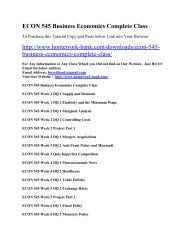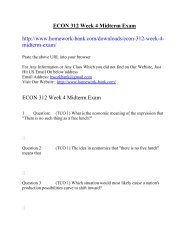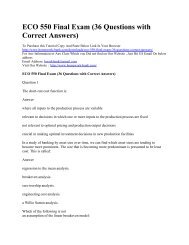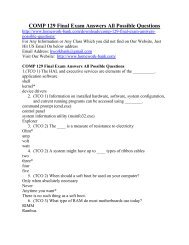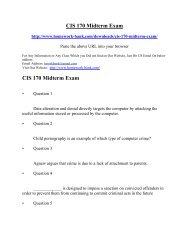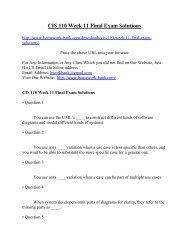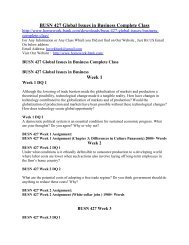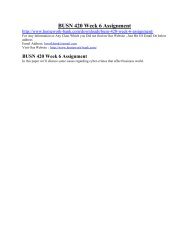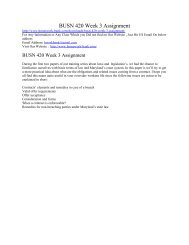o_19i2p1hv3jeu10hr1n4f130kp3d34.pdf
For Any Information or Any Class Which you Did not find on Our Website , Just Hit US Email On below address Email Address: hworkbank@gmail.com Visit Our Website : http://www.homework-bank.com/
For Any Information or Any Class Which you Did not find on Our Website , Just Hit US Email On below address
Email Address: hworkbank@gmail.com
Visit Our Website : http://www.homework-bank.com/
You also want an ePaper? Increase the reach of your titles
YUMPU automatically turns print PDFs into web optimized ePapers that Google loves.
Is this an equilibrium? If so, is it stable? Are the cities at their socially optimal size?<br />
It is an equilibrium but is not stable. The cities are not at their optimal size.<br />
Is this an equilibrium? If so, is it stable? Are the cities at their socially optimal size?<br />
Economics 312 Urban Land Economics<br />
VERSION 2<br />
SOLUTIONS<br />
Midterm Exam #2<br />
Section 1: Multiple Choice (3 points each)<br />
Select the most appropriate answer, and carefully bubble in the letter of the answer on your NCS<br />
marking card.<br />
Questions 1-4 refer to the following setup and diagram.<br />
Consider a farmer choosing between three pieces of land, each of different fertility. The world<br />
price of grain is $10 a bushel and is expected to remain fixed. Each diagram shows the cost<br />
curves associated with annual production on the land. Average production cost (non-rent costs<br />
per unit) at the profit maximizing quantity is denoted in each diagram. Assume all farmers have<br />
the same productivity on a given piece of land and assume free entry and a competitive market<br />
for land.<br />
1) Which parcel—after rent is paid—will yield the highest profits for the farmer?<br />
A) All will yield the same profits.<br />
B) All will yield negative profits and so won’t be farmed.<br />
C) Parcel I.<br />
D) Parcel II.<br />
1<br />
E) Parcel III.<br />
2) Given the annual rent earned by Parcel II in equilibrium, what would we expect Parcel II to<br />
sell for? Assume the annual interest rate is 5%<br />
A) $800,000<br />
B) $1,440,000<br />
C) $8,000<br />
D) $160,000<br />
E) None of the above.<br />
3) The pre-rent profit associated with the least fertile parcel of land is



